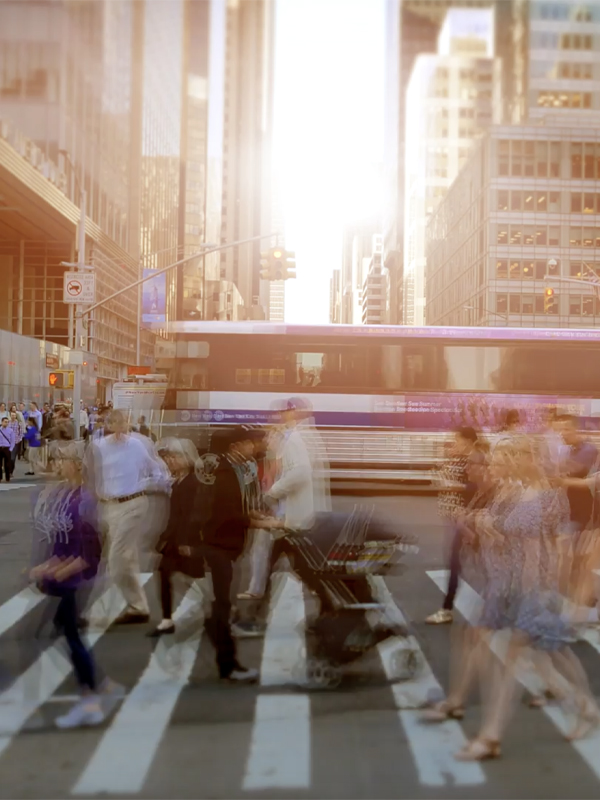Key Takeaways
- Brand experience design is an advanced strategy that creates a captivating and memorable customer relationship through creativity, usability, and emotional connections across all touchpoints.
- It goes beyond traditional branding by incorporating the brand's core values and mission to create a consistent and engaging narrative that resonates deeply with customers.
- This involves merging aesthetics with functionality, ensuring usability, and fostering emotional engagement to create a holistic and profound brand “soul.”
- Adopting brand experience design can foster deeper customer loyalty, enhance lifetime value, achieve significant business growth, and improve market positioning.
- Integrating brand experience design with current strategies and measuring its intangible effects pose challenges, yet with a strategic approach, these can be managed and overcome.
As today’s brands vie for attention in every digital and physical nook, the key to standing out and creating lasting customer bonds lies in delivering a cohesive brand experience. Enter brand experience design, a concept that goes beyond traditional branding by weaving creativity, usability, and emotional resonance into every interaction a customer has with a company. This comprehensive guide is aimed at marketers, CMOs, and CX leaders, providing an in-depth understanding of brand experience design, its significance, strategies for implementation, real-world case studies, and an outlook on emerging trends.
Defining brand experience design

At its core, brand experience design is the deliberate creation of delight and cohesion across every customer touchpoint. It is the intangible yet deeply felt connection a brand establishes through strategic visual, emotional, and sensory experiences. Think of it as the soul of your brand brought to life through a website's user interface, the ambience in your flagship store, or the texture of your product packaging—every element, every detail, crafted to evoke a specific response from your audience.
The crucial components
Brand experience design is not a one-size-fits-all endeavor. It is customized and adaptable, covering multiple facets such as:
- Aesthetics and Functionality: The way your brand looks and the way it works is vital. But it's essential to ensure that the design not only reflects your brand identity but also serves the functional needs of your customers.
- Usability: Incorporating ease-of-use principles and ensuring your touchpoints are navigable. An experience is enjoyable only if it's intuitive.
- Engagement: Connecting with customers on an emotional level. Great designs evoke joy, satisfaction, and trust.
Beyond traditional branding
While branding focuses on the outward expression of your company—logos, taglines, and color schemes—brand experience design provides depth. It reaches inward, leveraging a brand's values, mission, and customer promise to cultivate a unified, compelling story. This approach harmonizes all the design elements within an organization, ensuring no confusion, no mixed signals—only a singular, powerful brand presence.
Understanding the impact
Businesses that invest in the art of brand experience design see tangible and intangible returns. The intangible—a deeper connection with their customers, stronger brand loyalty, and increased customer lifetime value. The tangible—a competitive edge translating to accelerated growth and a solid market position.
Enriching customer engagement
A well-crafted brand experience captivates the customer, transforming their purchase or visit into a memorable highlight. The goal is not just to sell but to engage—to create a narrative that customers want to be part of.
Fostering brand loyalty
When customers feel valued and understood, loyalty follows. An exceptional brand experience establishes a bond; it’s what steers them to your products and services over and over again.
Driving business growth
The numbers don't lie. Businesses that prioritize user experience and design excellence outperform those that don't. Whether it’s higher conversion rates, increased referrals, or reduced churn, the correlation between a great brand experience and business growth is unequivocal.
Unveiling strategies for success
To seamlessly integrate brand experience design into the very fabric of your organization, adopting a strategic and methodical approach is crucial.
Crafting a seamless journey
User journeys should be mapped meticulously, ensuring that each touchpoint along the customer's path reflects the brand's vision and purpose. It’s about telling a consistent story, from awareness to advocacy.
Tailoring with personalization
The era of generic marketing is far behind us. Personalization is the new standard. Brand experience design must be flexible enough to respond to individual customer needs, preferences, and behaviors.
Staying innovative and agile
In a fast-paced world, static designs quickly become outdated. Fostering an innovative spirit and an agile approach to design ensures that your brand remains fresh and in sync with evolving customer expectations.
Case studies and best practices
Starbucks: Launching an iconic in-store experience
Aquent Studios partnered with Starbucks on the meticulous design and launch of the Starbucks Roastery & Reserve store in the Empire State Building, aligning it with the global stature and ethos the coffee giant aspires to. The studio took on the massive yet rewarding challenge of reimagining every aspect of Starbucks' physical presence, from the layout and design of the store to the minute details that contribute to the overall ambiance and customer experience (CX).
This project was not just about aesthetic enhancement but about embedding Starbucks' core values into every square inch of the space. This detailed, thoughtful approach to brand experience design not only elevated Starbucks' in-store atmosphere but also reinforced the emotional connection customers have with the brand.
Marriott: Reshaping hotel experiences
Marriott International aimed to elevate its customer experience across all digital and physical touchpoints. Aquent Studios was tasked with creating a unified and scalable guest journey for Marriott’s global properties.
The challenge was to design a cohesive customer experience that could be consistently applied across Marriott's diverse portfolio of over 5,000 properties worldwide.
Aquent Studios developed a comprehensive strategy, integrating a multidisciplinary team with Marriott's internal teams. This collaboration focused on refining the customer journey, from booking to checkout, through:
- Strategic planning and analysis.
- Integration of UX design and technology improvements.
- Creation of a new design language for brand consistency.
The partnership led to a transformative customer experience marked by:
- Improved guest satisfaction through a seamless journey.
- Consistent brand experience across global properties.
- Enhanced operational efficiency and reduced costs.
Marriott International’s collaboration with Aquent Studios set a new hospitality standard, showcasing the impact of strategic design and innovation in delivering a superior, unified customer experience.
Navigating Challenges and Crafting Solutions
Implementing brand experience design is an essential strategy for businesses looking to enhance their customer interactions and overall brand perception. However, the journey toward a fully integrated and effective brand experience design is often challenging. Recognizing these obstacles and preparing for them in advance can significantly ease the implementation process, turning potential setbacks into opportunities for growth and innovation.
Integrating with existing strategies
For companies that have been in the market for years or even decades, one of the most daunting tasks is aligning new experience designs with existing legacy systems and processes. While once state-of-the-art, legacy systems may now hinder the seamless integration of innovative design strategies due to outdated technology or incompatible frameworks. Likewise, well-established processes that employees are familiar with may impede change, acting as a hindrance to embracing new methodologies.
To overcome these hurdles, companies should consider an incremental rollout of new design strategies. This approach allows for a gradual integration with existing systems, reducing the shock to both the technological infrastructure and the organizational culture. Additionally, clear and consistent communication is paramount throughout the process. Stakeholders at every level of the organization should understand the benefits of the new design strategy, how it will be implemented, and what changes to expect. This transparency helps build support across the company, facilitating a smoother transition.
Measuring the intangible
Measuring the success of brand experience design can also be challenging. Unlike clear-cut metrics like sales or website traffic, gauging the impact on brand perception is tough due to its intangible nature. Traditional metrics might not fully capture the effectiveness of design efforts.
However, companies can use several methods to assess the success of their brand experience design. Customer feedback surveys provide direct insights into consumer perceptions, highlighting strengths and areas for improvement. Brand sentiment analysis, using social media monitoring, gives another perspective on customer views. Additionally, calculating customer lifetime value (CLV) can reveal the long-term effects of design strategies on loyalty and spending.
By using these approaches, companies can gain a detailed understanding of the impact of their brand experience design. This allows for ongoing strategy refinement to keep the brand experience engaging and in line with customer expectations.
Glimpsing into the future

Brand experience design is constantly changing due to advancements in technology, shifts in cultural dynamics, and evolving customer expectations. Staying ahead of these trends is crucial for brands aiming to maintain their edge in a competitive marketplace.
Integration with emerging technologies
As we look to the future, interactive solutions and branding are poised for a significant evolution, thanks in large part to the advent of virtual reality (VR), augmented reality (AR), and the Internet of Things (IoT). These technologies enable the creation of rich, interactive experiences and mixed reality solutions that foster a deeper connection between the brand and its audience.
Ethical and sustainable design practices
In today's world, consumers are growing more mindful of how their decisions influence the environment and society on a broader scale. They're not just seeking exceptional experiences; they're also demanding that these experiences be ethically responsible and sustainable. Brands that integrate these values into their experience design, making sustainability and ethical considerations a core part of their branding narrative, are well-positioned to capture the hearts and minds of this conscientious demographic. By doing so, they not only enhance their brand reputation but also secure a loyal customer base that values purpose as much as it does quality.
Conclusion
Brand experience design isn’t just a current trend—it's the future of branding. By focusing on the sensations and emotions evoked by your brand, and ensuring these are consistently delivered across all channels, you build an experience that's not just remembered but relished.
If you’re embarking on a brand experience project or are looking for a partner to support your in-house agency, we can help. Explore our services or get in touch to learn more.




